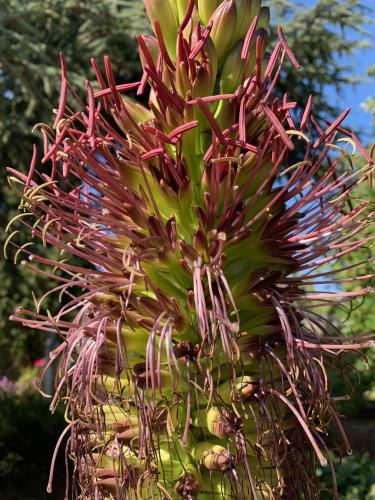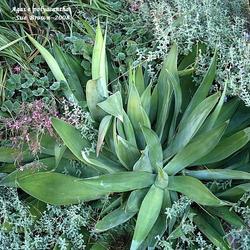I cannot speak for Danita, but there are only so many red flowered agaves that are also racemose with regards to their inflorescence that look like your plant. While not common, there are several (online) nurseries in the US who have carried or are carrying this plant, so it is obtainable.
As to it being monocarpic, as I am sure you know, many Agaves are very very good at asexual propagation ie. offsetting, so while after flowering the rosette that flowered may die (I do not know for this plant, since it is one that does not like the Phoenix area heat much - but I have seen it listed as monocarpic), the fact that many offsets will continue on living technically means the whole of the plant does not in fact die after flowering. However, given that in case of most Agaves the offsets tend to form their own complete plant most are still considered monocarpic, because in most the rosette that flowered will die, unlike some other plants where the growth point that flowered stops growing, but is replaced by new growth points on the same plant. To my eye your plant does not look much like it is in the process of giving the ghost, which is often an early indicator of an Agave getting ready to flower: its outer leaves start to die off faster than usual, so it may indeed be polycarpic, but sometimes the conditions allow the Agave to go on clinging to life for even years after flowering, happily offsetting, but never really showing any growth on the rosette that flowered, which over time will slowly wither away.


